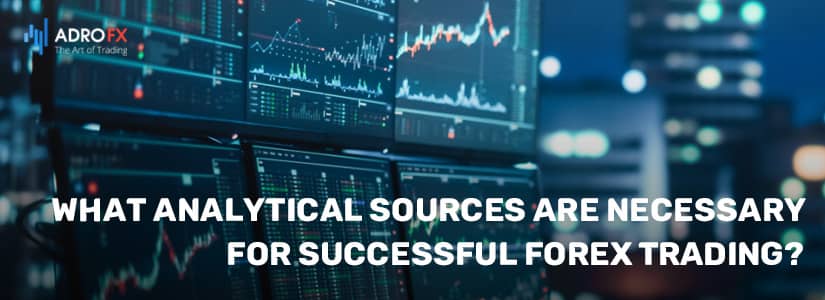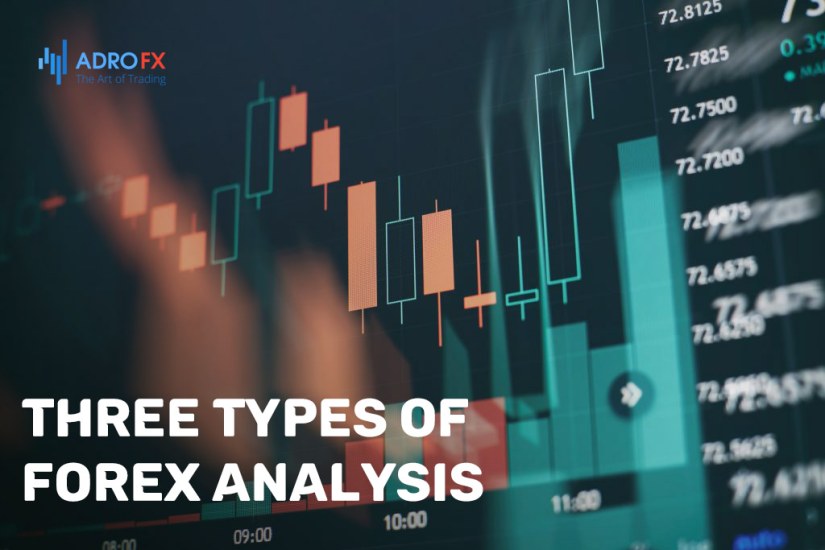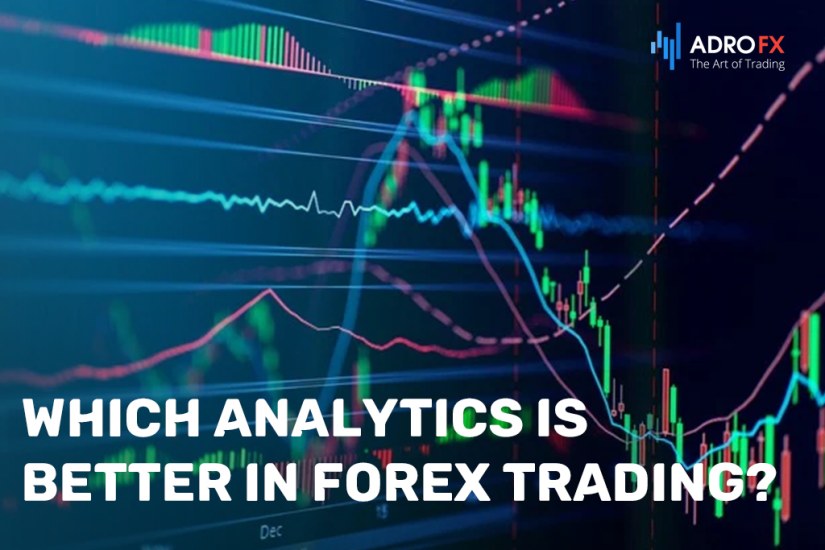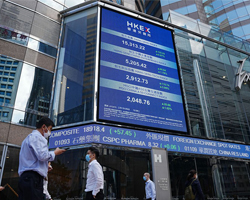What Analytical Sources are Necessary for Successful Forex Trading?

The analysis of the situation in the financial markets is carried out via text and graphical materials from specialized sources. Forex analytics implies studying the news, and economic and political factors to predict the movement of asset prices. It is an integral part of any trader, as opening and closing trades should be based on certain factors.
Forex market analytics may be based on any source. They need to be as objective and informative as possible. It is rational for a trader to find one or more permanent sources of information from which to get news, study experts' opinions, and view the economic calendar.
Three Types of Forex Analysis
Analysis of global financial markets is based on three factors:
- Technical analysis;
- Fundamental;
- Intuitive actions.
The difference lies in the source of information and its type, which are used in the forecasting process. Every trader has a task to predict in which direction the price of the asset will move. For this purpose, we can use the laws of economics or work only intuitively.
The first factor is characterized by the study of fundamental factors from the world of politics and economics, which can influence the prices of currency pairs, shares of companies, metals, raw materials, cryptocurrencies, indices, and other groups of assets.
The second factor is characterized by the study of established graphical figures and the laws of price chart behavior. An experienced forex analyst uses all types of analysis to make predictions.

Fundamental Analysis
Fundamental forex analytics is a term that describes forecasting the price of financial assets based on economic and political indicators. In other words, it is an external factor that can affect the value of any financial instrument.
Investors and traders use this type of analysis to assess the value of currency pairs, stocks, indices, and other assets.
The following factors are taken into consideration:
- Publications of rating and news agencies regarding events from the world of economics and politics (e.g. Bloomberg);
- Official reports/publications by famous people (e.g., top officials of states, heads of central banks, prime ministers);
- Economic news about individual companies, about the state of affairs in a particular area of the economy (e.g. news about the reduction of oil production);
- Disclosure of insider information or open statements of heads of companies.
Previously there was a stereotype that a professional forex analyst is someone who constantly watches the news and trades on the financial markets. In fact, this is true, because fundamental forex analytics supposes a constant study of the described factors. It is only important to understand how each situation influences the financial instrument and the market as a whole.
For example, the statement about the critical growth of unemployment in the USA will have a negative effect on the USD value against other currencies. You can benefit from that, by opening trades in currency pairs with the U.S. dollar in one direction or the other. And the announcement of the arrest of the head of a large company will certainly cause its shares to fall in price if it is a public company.
It is rational to make a fundamental forecast of the forex market based on materials from the following sources:
- Financial news agencies;
- Independent portals for traders;
- Economic calendar;
- Opinions and analysis of experts;
- News from TV channels and other news resources.
The faster reaction to this or that event, the more chances to get into good conditions to enter the market.
Technical Analysis
Forex market analytics can also be based on technical factors. They include patterns of price changes in the past. But globally, this type of forecasting is based on graphical tools, indicators that study the behavioral patterns of asset prices. The fundamental reasons are not taken into consideration, and only post-factum and dry data are studied: sales volumes, and the ratio of buying and selling of assets from "bulls and bears". The chart tends to repeat patterns. Based on economic laws, forex technical analysis patterns are formed, which are periodically formed on the price chart and indicate one or another scenario.
All a trader needs to do to perform this type of analytics is to be equipped with an up-to-date chart and skills. Price levels (maximum and minimum of asset sales over a certain time period) are very important in analytics. Price levels are displayed on the chart using Japanese candlesticks (in standard settings). Therefore, the initial task of the trader is to study the most common patterns on the chart, to be able to find them. In 90% of cases, the pattern accurately models the price behavior of a financial instrument.
The basics of technical analysis:
- The price of assets reacts to any event;
- Prices move under the influence of trends (falling or rising trend, flat);
- History repeats itself.
These postulates characterize the principles of analysis. In particular, the price of any asset moves in a trend. It can be noticed in any time frame (especially, from D1). Therefore, traders should take into account what kind of trend is prevailing in the market at the moment.
History always repeats itself. In particular, the patterns on the price chart have the same outcome - these are the laws of economics. This is the reason why trading is not called a game of chance. It is a complex of analytical components.
Also, the price reacts to any events. But this already belongs to fundamental analysis.
Intuitive Analysis
This method of forecasting is not based solely on your intuition. It should be based on knowledge, experience, and skills, but without regard to external sources of information. But only experienced forex analysts can correctly forecast asset price movements with varying success, without even the use of basic tools.
What is Analytics Based on?
Online forex analytics is based on many factors. The trader must necessarily understand and take into account the different styles of trading. Forecasting in scalping and day trading will necessarily be different because different factors and aspects are taken as the basis.
Forex analysts necessarily take into account the market situation, including the political and economic situation. By going deeper, it is possible to study the forecasts of experts in terms of market development for the next few months. But it is not necessary for every trader.
Which Analytics Is Better?
As for choosing between the analytics based on technical analysis and fundamental analysis, there shouldn't be any choice at all:
- Firstly, you simply cannot do without the technical analysis in intraday trading: price fluctuations in low time frames can be predicted only based on this type of analysis;
- Secondly, the fundamental analysis is more profound, it points to possible market reversals, which cannot be correctly diagnosed using technical analysis, especially in the long term.
Thus, although there is an eternal methodological dispute between supporters of the technical and fundamental analysis, which is expressed in reproaches regarding the validity of making forecasts by one or method, the advanced brokers always use both, understanding the importance of mutual supplementation of each of them.

Different Types of Forex Analytics
The two types of analytical approaches determine, respectively, the existing types of forecasts - they can be based on technical and fundamental analysis.
In addition, we can distinguish the types of forecasts in terms of accessibility of receiving analytics:
- Paid, received by subscription from independent expert agencies;
- Conditional paid, exclusively provided by brokers to their clients;
- Free, or publicly available.
Paid analytics are provided mainly by independent expert agencies that are not engaged in any particular interests in the field of forex trading. Most of this analytics is fundamental, or it is the daily forex analytics that is provided on a subscription basis. Undoubtedly, such analytical reviews are of high quality, prepared by a team of professionals that comes up with the most probable scenario of events in the financial markets, and are very valuable for comparison with the conclusions of other experts.
So, in the United States (since 2003) all brokers along with their analytics are obliged to supply their clients with reviews from independent expert agencies. Independent agencies live by selling news feeds and fundamental analytics to brokerage companies, which then provide access to these analytics to their clients.
In most countries, independent paid analytics is not very developed, and the most reliable information can be obtained from reputable brokerage companies. Of course, open analytics is less specific and hides a lot of important details, but clients of forex brokers can count on free high-quality analytical reviews. Of course, the word "free" sounds conditional here, because the fee for providing such analytics is somehow included in the total cost of services of a brokerage company.
There is also truly free analytics, provided mainly by little-known at the moment brokers or traders who want to promote themselves. There is nothing wrong with that, and such analytics can also be very valuable, but it is still better to test that analysis first. Another thing - the "anonymous" free analytics, the authorship of which is unknown or questionable, - it is better not to rely on such materials.
Some forex brokers publish real detailed daily analytics in the open access, with an indication of the possible entry and exit points from the market, an explanation of why this should be expected, and what is the forex forecast of the current trend, but with some delay as compared to when their clients receive it. This is done to demonstrate the quality of their analytical team brokerage companies.
Basically, any forex market forecast can turn out to be reliable. But it is obvious that paid forecasts contain much more useful information for making the right decision, they are more detailed, thorough, and well-grounded.
Every day or short-term forex forecasts are the exclusive prerogatives of technical analysis which, with the help of patterns and various technical indicators (trend, channel, and oscillatory), determines the emerging trends for certain currencies and currency pairs and market entry/exit points.
The best weekly forex forecasts are based on technical analysis, but also include elements of fundamental analysis, including experts' expectations of certain events (mainly macroeconomic reports), which are taken into account when choosing or changing a forex trading strategy.
In short-term (day-trading) and medium-term (from a week to a month) trading, various methods and techniques of technical analysis are used:
- Fibonacci Retracement;
- Japanese candlesticks;
- Ichimoku and B. Williams's indicators;
- Murrey math levels;
- Elliott Wave Theory (based on which a forecast is impossible to make orally or in writing without a graphic illustration) and others.
Although it should be noted that for the forex market forecast for a week or more can already be considered long-term.
The long-term forecast is practically impossible to carry out by means of technical analysis: here the fundamental analysis of the world markets comes to the foreground, which helps to reveal time frames, in which reversals of the market will probably occur, and, therefore, arms forex traders with additional information for timely risk diversification and hedging.
The main underlying reasons for the growth of any currency in the long term, except for the crisis periods, in the fundamental analysis, can be considered
Increase in the growth rate of economic development of the state (world region) compared to the growth rate of the countries issuing competitive currencies, predicted based on business and consumer activity indices, labor statistics, the dynamics of the industry, construction and trade, and trade and investment balance.
The growth of interest rates of national banks is determined by some indicators of the monetary policy of the state.
Conclusion
One way or another, finding the source of high-quality and detailed forex financial analytics is possible only with your efforts, paying attention to the effectiveness of forecasts of different analytical teams or individual experienced traders and brokers, comparing them with each other, and making appropriate conclusions. However, to ensure that your efforts in forecasting do not lead to bankruptcy, you need to acquire knowledge, which will be a reliable basis for logical conclusions.










